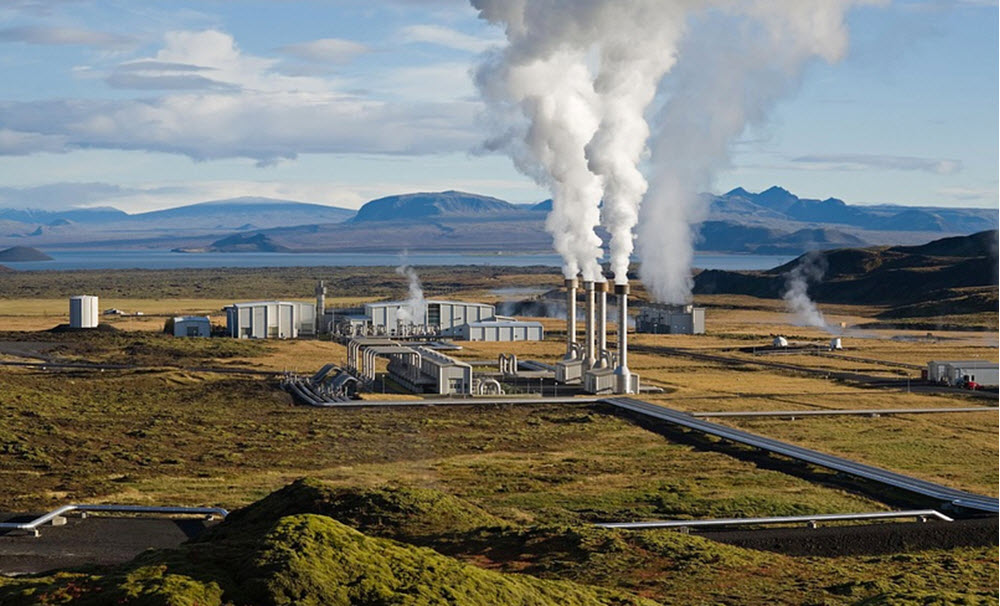Geothermal energy is energy found in the Earth´s crust. It originates from the formation of our planet and from the radioactive decay of materials.
Geothermal heating is currently used in approximately 70 countries around the world, while electricity is generated from geothermal energy is circa 25 countries. Examples of countries where at least 15% of their total electricity comes from geothermal sources are Costa Rica, El Salvador, the Philippines, Iceland, New Zealand and Kenya. All of those countries are located on or near tectonic plate boundaries.

In the year 2019, 13,900 megawatts of geothermal electrical power was made available. (That number is for electricity only, and does not include all the gigawatts of direct geothermal heating used to heat buildings, run industrial processes, carry out desalination, agricultural applications, etc.)
Geothermal power is classified as sustainable energy. The energy extraction is very small compared to the total heat content of our planet. At this point, the average carbon dioxide emissions from geothermal electric stations are 45 grams per kilowatt-hour of electricity, and that is less than 5% of what a conventional coal-fired power plant emits.
Generating electricity from geothermal energy
Electricity can be generated from geothermal energy using several different technologies, and the main ones are dry steam, flash steam and binary cycle.
Dry steam geothermal power plants use steam directly from a geothermal reservoir to drive the generator turbines. The world´s first geothermal power plant was a dry steam power plant, using naturally emerging steam in Italy.
Flash steam geothermal power plants take high-pressure hot water from deep inside the earth. As the pressure decreases, the liquid is turned into steam, and this steam drives the generator turbines. As the steam cools, it turns into water again, and this water is injected back into the ground. Today, most geothermal power plants use this technology.
Binary cycle power plants take geothermal hot water and use it to heat another liquid so much that the second liquid turns into steam. That steam is then used to drive the generator turbine.
Geothermal resources
The most active geothermal resources are typically found along major tectonic plate boundaries. That is also where we tend to find active volcanoes since the two go hand in hand. Geothermal energy can reach the earth´s surface in various ways, including hot springs, geysers, volcanoes and fumaroles.
Geothermal power plants use resources that provide not just heat (thermal) but also water (hydro). Modern geothermal power plants are typically located in spots where they can get access to water that is 300-700 degrees F (roughly 150-375 degrees C). The water can come from either dry steam wells or hot water wells.
Background
Humans have enjoyed hot springs since time immemorial, and hot springs are a prime example of geothermal energy. The oldest known spa is a hot spring stone pool used during China´s Qin Dynasty in the 3rd century BCE. The ancient Romans took things one step further and began using hot water from hot springs to heat their buildings. When they took control of England, they used the thermal springs in Somerset to feed local public baths and underfloor heating.
The geothermal district heating system in Chaudes-Aigues, France, has been in use since the 1400s CE. Another notable milestone in the history of geothermal energy use was reached in 1827, when people in Larderello, Italy, started utilizing geyser steam to extract boric acid from volcanic mud. In that same spot, but in 1904, Prince Piero Ginori Conti tested the first geothermal power generator and it successfully lit four light bulbs. In 1911, the world´s first commercial geothermal power plant was built in Larderello.